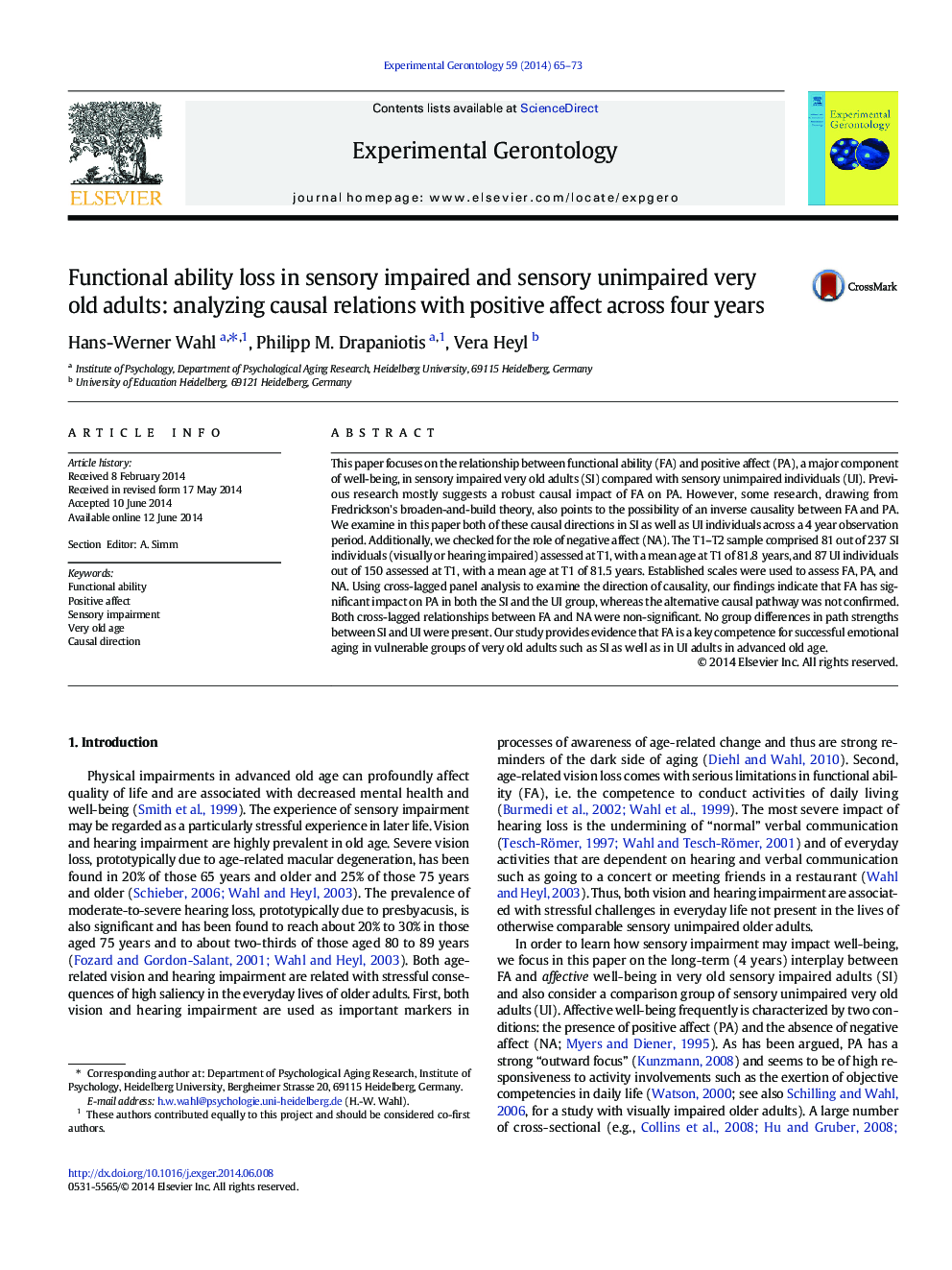| Article ID | Journal | Published Year | Pages | File Type |
|---|---|---|---|---|
| 8264044 | Experimental Gerontology | 2014 | 9 Pages |
Abstract
This paper focuses on the relationship between functional ability (FA) and positive affect (PA), a major component of well-being, in sensory impaired very old adults (SI) compared with sensory unimpaired individuals (UI). Previous research mostly suggests a robust causal impact of FA on PA. However, some research, drawing from Fredrickson's broaden-and-build theory, also points to the possibility of an inverse causality between FA and PA. We examine in this paper both of these causal directions in SI as well as UI individuals across a 4Â year observation period. Additionally, we checked for the role of negative affect (NA). The T1-T2 sample comprised 81 out of 237 SI individuals (visually or hearing impaired) assessed at T1, with a mean age at T1 of 81.8Â years, and 87 UI individuals out of 150 assessed at T1, with a mean age at T1 of 81.5Â years. Established scales were used to assess FA, PA, and NA. Using cross-lagged panel analysis to examine the direction of causality, our findings indicate that FA has significant impact on PA in both the SI and the UI group, whereas the alternative causal pathway was not confirmed. Both cross-lagged relationships between FA and NA were non-significant. No group differences in path strengths between SI and UI were present. Our study provides evidence that FA is a key competence for successful emotional aging in vulnerable groups of very old adults such as SI as well as in UI adults in advanced old age.
Related Topics
Life Sciences
Biochemistry, Genetics and Molecular Biology
Ageing
Authors
Hans-Werner Wahl, Philipp M. Drapaniotis, Vera Heyl,
